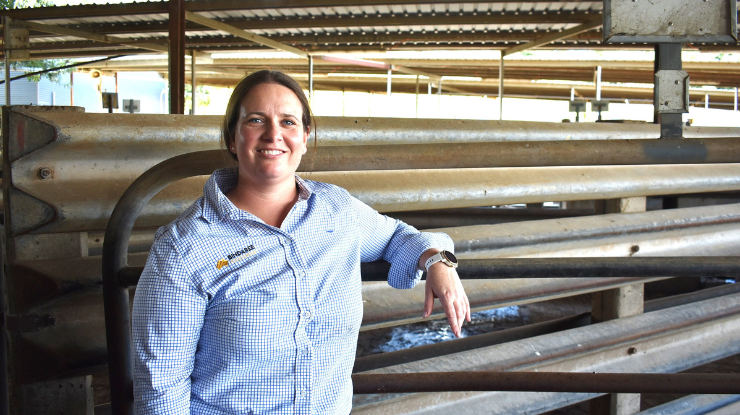 Bindaree Livestock Program Manager Alice Lodge
Bindaree Livestock Program Manager Alice Lodge
On-farm handling boosts beef’s processing performance
Cattle welfare is a key focus for Bindaree Food Group. This commitment extends beyond their own facilities through to each animal’s treatment on supplying farms and while preparing cattle for transport.
Bindaree Livestock Program Manager Alice Lodge said the company works with a network of producers and trusted transporters to help everyone understand how to prepare cattle for their intended journey.
“We want what’s best for the farmer and what’s best for the animal,” Ms Lodge said.
“If animals are prepared well, generally they will travel well.”
Well-handled animals perform better on plant
“Preparing cattle for transport starts in the weeks before an animal leaves the property,” she said.
“A lot of farmers do understand but some don’t realise what effect their on-farm processes have on an animal’s performance in the plant.
“What has the last month of the animal’s life looked like? Have they been in the yards every day? Have they had dogs around and been stressed? Have they changed mobs?
“Then the week of trucking – when were they brought into the yards? Were they run into the yards five minutes before the truck arrived? Have they had feed and water? Was there shade provided?
“I think it’s really important for people to understand that what you do in that last month, last week, last 48 hours of an animal’s life on-farm has the biggest impact on what happens when it comes to the plant.
Work back from delivery time to plant
The Bindaree livestock team encourages their supplying producers to plan cattle preparation times, working backwards from when animals are booked for delivery because the plant has set cattle delivery times
“If I am a farmer I am thinking ‘What time do I need to have my cattle to the plant and how does that work within my business?
“As a producer, they can say, ‘My cattle have to be into the plant by 5pm, I want my cattle going at the best part of the day. I don’t want to yard to them at 1pm when it’s 42 degrees. I know I don’t have shade in the yard and don’t want them trucked at the hottest part of the day.’
Questions to ask might include:
- When is the best time to put them into the yards?
- Am I better off bringing them in 12 hours earlier to sit, chill out, not be stressed and have access to clean water, shade and hay?
- Should I put them in a small holding paddock next to the yards?
“It’s about what they can do as a producer to not add stress and what factors are in their control.”
Only select cattle fit for the intended journey
Ensuring cattle are fit for their intended journey will also save producers money and headaches down the track, Ms Lodge said.
“If an animal arrives at the plant unfit, we can turn it around and not unload it.
“It’s wasted cents per kilometre for the producer.
“Secondly, an animal can arrive at the plant when it wasn’t fit to load and became worse in the travel period. There is every chance it gets here and must be put down based on our animal welfare guidelines.
“Then producers get no money for it and have to pay a disposal fee of between $300–$500.
“We don’t want to be turning things away. It's stressful for the animal, the producer and the transporter. It all comes back to your on-farm preparation and decisions and chain of responsibility.”
Bindaree are happy to talk to producers about marginal animals they’re not sure about, discussing options in consultation with the producer and agent.
Infrastructure improvements for welfare outcomes
Bindaree Food Group have a series of feedlots throughout Southern Queensland supplying their two abattoirs at Inverell and Myola. They can have 35,000 head on feed at any one time, in addition to cattle sourced from saleyards.
The company continues to invest in infrastructure improvements with new rubber matting replacing concrete and mesh flooring on the unloading ramps and stock yards to improve onsite animal welfare.
“The Numat takes the pressure off the animal’s foot. It's softer to walk on, quieter and has a bump texture that prevents slipping. We have had a positive experience with this matting.”
By the end of 2026, every animal will also be under shade onsite. Shade sails are being installed to reduce heat impact on cattle.
“There are so many factors that are important for us – ultimately, it comes down to animal welfare. It’s our main goal. It’s huge for our clients and those we supply meat to.
“We are very proud of our program and what we do.”
Action plan
1. Ensure animals are fit for the intended journey before they’re selected for transport.
2. Yard animals at least 12 hours in advance of trucking. Have them settled well on good quality dry hay and clean water before a truck arrives.
3. Remember on-farm handling in the months before transport impacts how an animal will perform on the plant – low stress is best.



